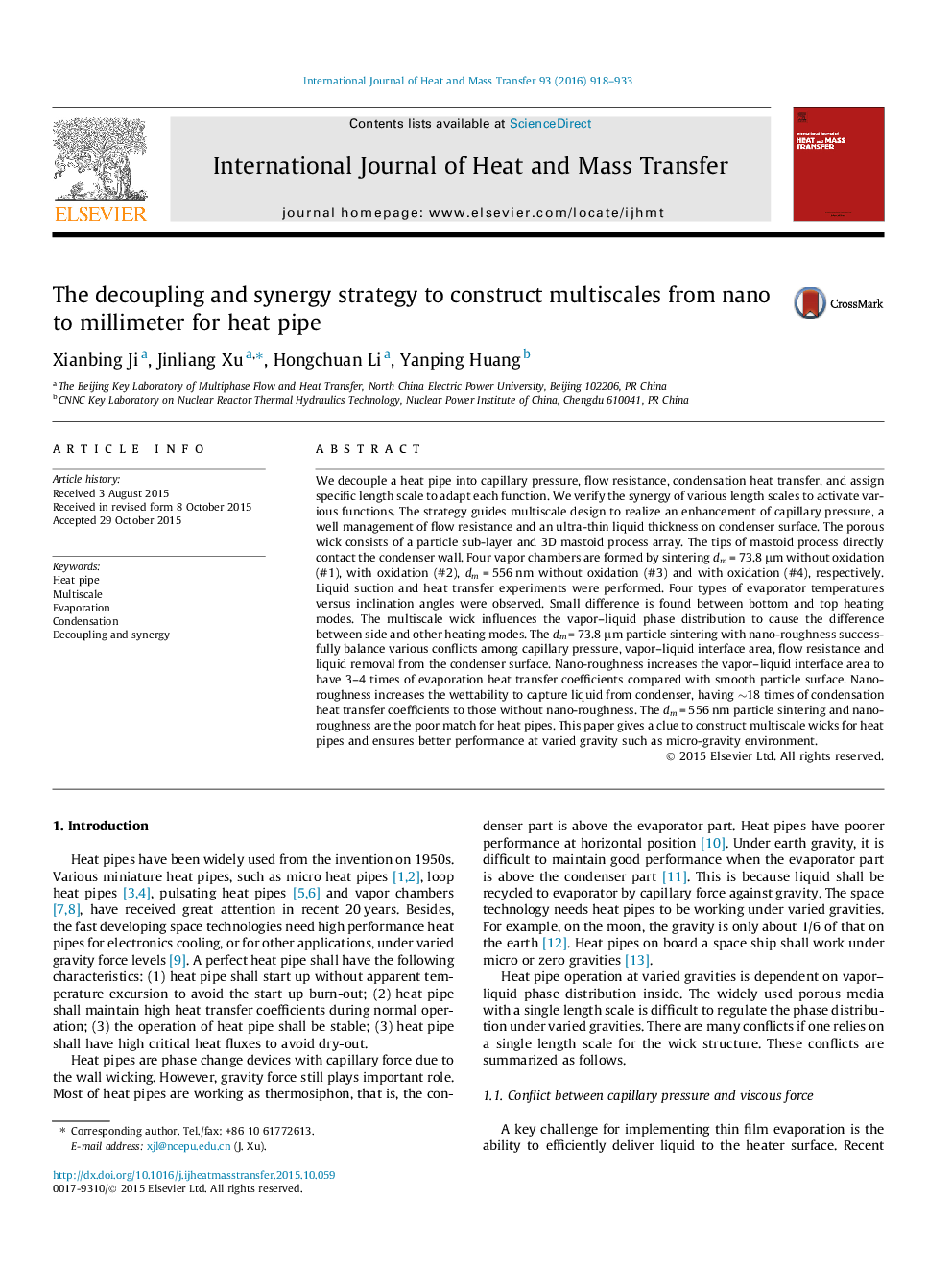| Article ID | Journal | Published Year | Pages | File Type |
|---|---|---|---|---|
| 7056263 | International Journal of Heat and Mass Transfer | 2016 | 16 Pages |
Abstract
We decouple a heat pipe into capillary pressure, flow resistance, condensation heat transfer, and assign specific length scale to adapt each function. We verify the synergy of various length scales to activate various functions. The strategy guides multiscale design to realize an enhancement of capillary pressure, a well management of flow resistance and an ultra-thin liquid thickness on condenser surface. The porous wick consists of a particle sub-layer and 3D mastoid process array. The tips of mastoid process directly contact the condenser wall. Four vapor chambers are formed by sintering dm = 73.8 μm without oxidation (#1), with oxidation (#2), dm = 556 nm without oxidation (#3) and with oxidation (#4), respectively. Liquid suction and heat transfer experiments were performed. Four types of evaporator temperatures versus inclination angles were observed. Small difference is found between bottom and top heating modes. The multiscale wick influences the vapor-liquid phase distribution to cause the difference between side and other heating modes. The dm = 73.8 μm particle sintering with nano-roughness successfully balance various conflicts among capillary pressure, vapor-liquid interface area, flow resistance and liquid removal from the condenser surface. Nano-roughness increases the vapor-liquid interface area to have 3-4 times of evaporation heat transfer coefficients compared with smooth particle surface. Nano-roughness increases the wettability to capture liquid from condenser, having â¼18 times of condensation heat transfer coefficients to those without nano-roughness. The dm = 556 nm particle sintering and nano-roughness are the poor match for heat pipes. This paper gives a clue to construct multiscale wicks for heat pipes and ensures better performance at varied gravity such as micro-gravity environment.
Related Topics
Physical Sciences and Engineering
Chemical Engineering
Fluid Flow and Transfer Processes
Authors
Xianbing Ji, Jinliang Xu, Hongchuan Li, Yanping Huang,
